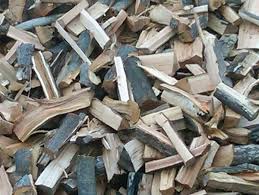When buying or seasoning your own firewood you want to make sure that the moisture level of firewood is between 15 and 20
p ercent. Anything higher, the efficiency drops, and the smoke output goes up.
ercent. Anything higher, the efficiency drops, and the smoke output goes up.
When looking for the best-seasoned firewood, it will be dried until the moisture content is below 20 percent. This will take some time, six months at a minimum. When looking at the wood if it has been properly seasoned, the color should be faded. As time passes, the color will continue to fade becoming lighter and the wood will become hard.
Some think that unseasoned firewood will not burn; this is simply not true it may take a little more time to ignite, but the biggest issue with the unseasoned firewood is that it will create smoke and more creosote as it burns. For the best fires with the least smoke, you always want to use seasoned firewood.
There are many types of wood.
Seasoned firewood that burns the best is hickory, oak, black locust, and beech woods. These woods are good to use through the cold winter season because they burn hotter and longer.
If you are looking for a wood to burn in the spring, summer or fall in your fire pit or at the campground you should look into poplar, pine and spruce. These woods burn quickly and you are able to control the heat better.
How will you know how much-seasoned wood you are purchasing? Firewood is typically measured by the cord. What is a cord of wood you might ask? The amount of wood in a cord varies depending on size, but typically, for firewood, it is about 85 cubic feet. This should measure depending on the size of the pieces approximately 4ft by 4ft by 8ft.
If you are looking for well-seasoned firewood, B-Sharp Property Maintenance has plenty on hand at all times. B-Sharp sells seasoned firewood by the cord, half cord, truckload, and wheelbarrow.

When stacking your wood you want to make sure it is up off the ground. You can use pallets railroad ties or even create your own base. Keeping the wood off the ground will help in the seasoning process. Stacking your wood properly will make sure that it gets good airflow, which then helps with the seasoning process. In addition, keeping the wood stacked off the ground will prevent mold and rot.
When stacking your wood you want to make sure it is stacked in an alternating pattern for each level, this will help to keep it stable so your woodpile does not fall over and promote airflow. You typically do not want to cover your woodpile; you want to make sure it is getting as much sunlight and air as possible for the seasoning process. However, if you know it is going to rain or snow you might want to cover it so that the wood does not soak up the moisture.